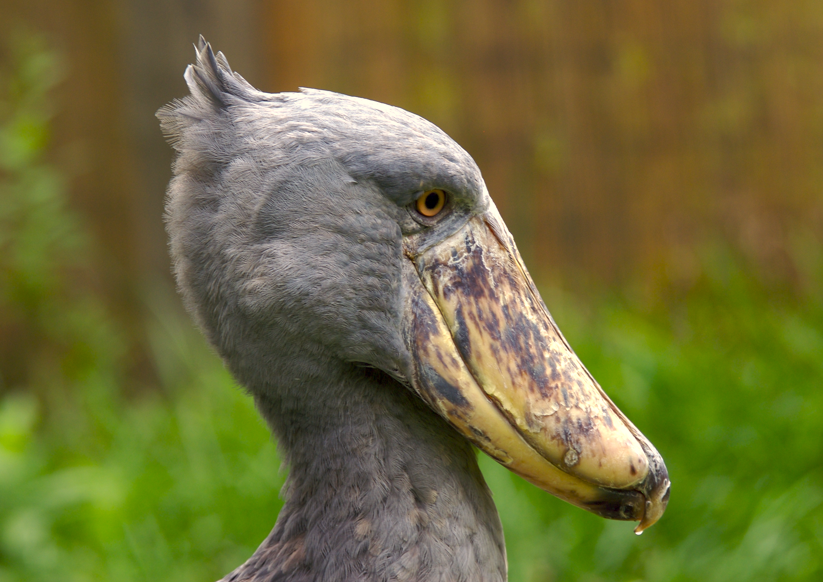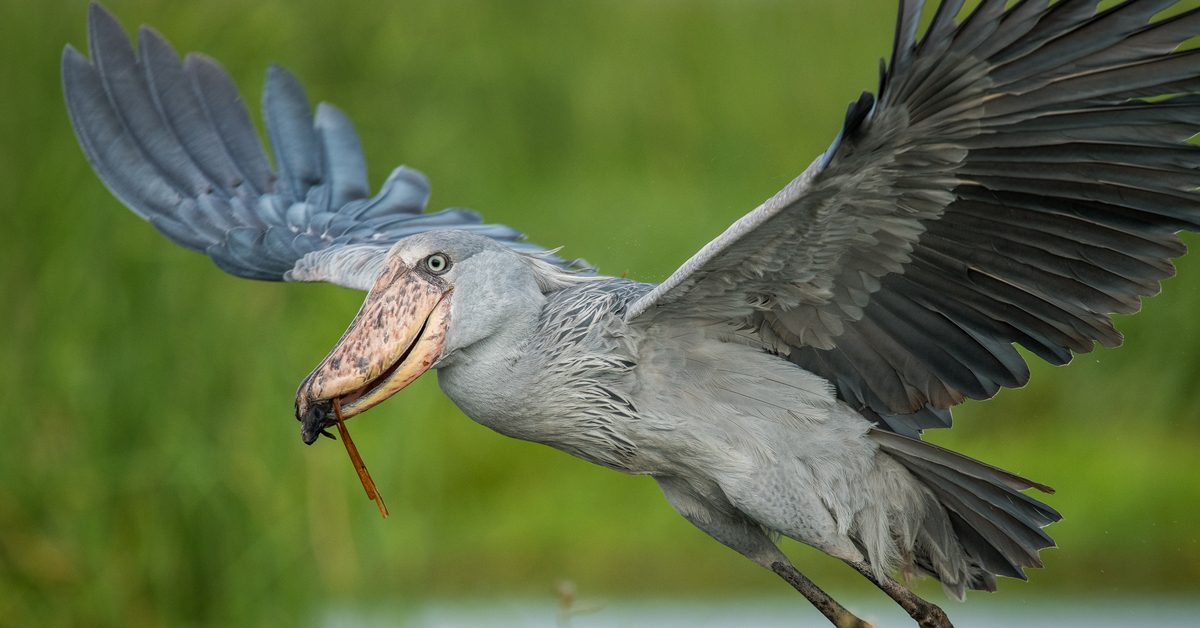Can i be able to see a shoebill stork in Uganda? Uganda is a birding destination with many bird species that can be seen as soon as you step off the plane at Entebbe International Airport. The several birds, the most well-known and trusted bird species is the shoebill stork, which is the most popular bird species.
The shoebill stork is an uncommon bird, and it is called the shoe bill stork because of the interesting shoe shape and the fact that the shoe bill is estimated to be among the 5000 that have been left in the world.
The Shoebill Stork has a skinny blue beak that resembles the grey feathers that it poses, and it stands fifty-five inches tall with a shoe-shaped beak. The birds usually avoid each other and aren’t very social; they only get together during mating or breeding season.
The Shoebill Stork is mostly found in Uganda, where it can be seen picking its way through swamps and muddy waters.

In case you are interested in seeing the shoe bill, you will be able to book your safari to Murchison Falls National Park, Queen Elizabeth National Park, Lake Mburo National Park, and Lake Victoria. The Ziwa rhino sanctuary, around Lake Kyoga, Semuliki wildlife reserves, among other destination areas, is so much interesting.
The shoebill’s feathers are medium blue-grey in color, and its tail is the same color as its wings; when it flies, its legs extend straight back far past its tail; and when viewed from afar, especially while in its habitat, its size and wingspan distinguish it from other birds. These birds are constantly drawn to fresh marsh waters that are depleted in oxygen and where fish regularly surface for air. Despite their size, they frequently stand and rest on floating foliage, looking just like a giant jacana.
Firstly, about their feeding habits.
The Shoebill stork feeds on fish such as tilapia, lungfish, catfish, and other small fish that are eaten by shoebills. Frogs, young crocodiles, snakes, turtles, snails, rodents, tiny waterfowl, and Nile monitor lizards are among the small prey they eat. In most cases, the shoebill stork forages in murky waters, stalking their prey while waiting to ambush them; unlike some other massive waders, they walk slowly and remain stationary. They usually hunt with their eyes open, and when they discover prey, they strike it hard. Depending on the size of the target, it may take more than ten minutes for it to be properly handled in its bill. The hippopotamus’s submerging activity, on the other hand, benefits the shoebills by helping to drive fish onto the water’s surface.
Where shoebill stork stay:
Most of the shoebill storks live in freshwater marsh regions in central tropical Africa, including sections of southern Sudan, eastern Congo, Rwanda, Uganda, western Tanzania, and northern Zambia.
They’re usually found in the west Nile sub-region and elsewhere in South Sudan. They can also be found in the Ugandan marshes and western Tanzanian wetlands. Some of these birds have been spotted in Kenya, northern Cameroon, Malawi, and the Central African Republic, although they are quite rare in these locations.
Usually, during the time of breeding,
Two shoebills come together in an area of around 2-4 square kilometers, separate from other shoebills; unlike pelicans, storks, herons, and other birds, they do not nest in colonies.
In the northern and southern regions, nesting begins shortly after the rainy seasons end, while in the majority of the central regions, shoebill storks begin nesting near the end of one wet season so that their young can hatch at the start of the following wet season. These birds make their nests on floating platforms composed of aquatic vegetation, and both male and female shoebills participate in the nest-building process.
Therefore, the shoebills are wonderful birds that you don’t need to miss when in Uganda as you enjoy your birding safari.


Comment (0)